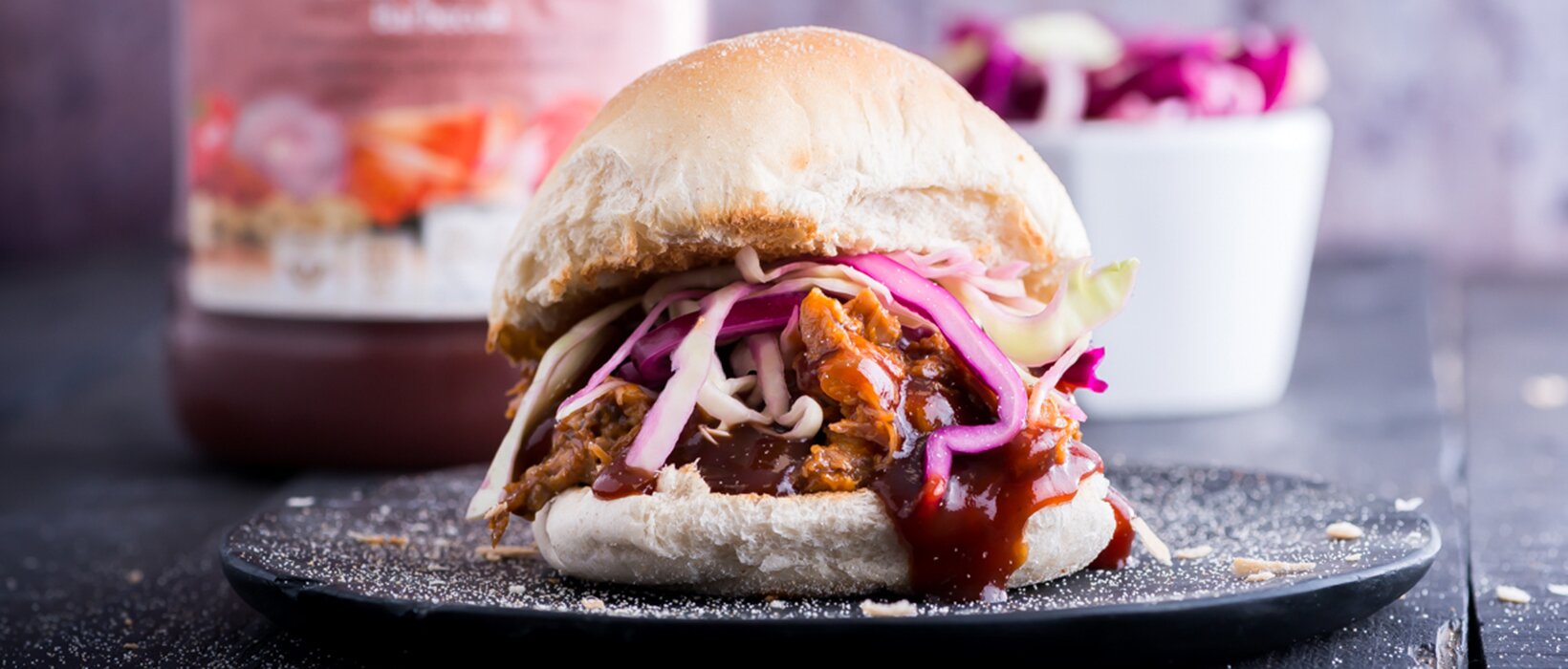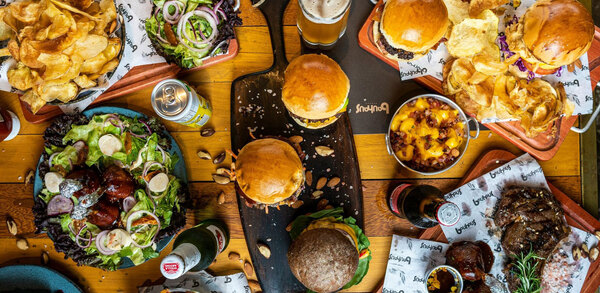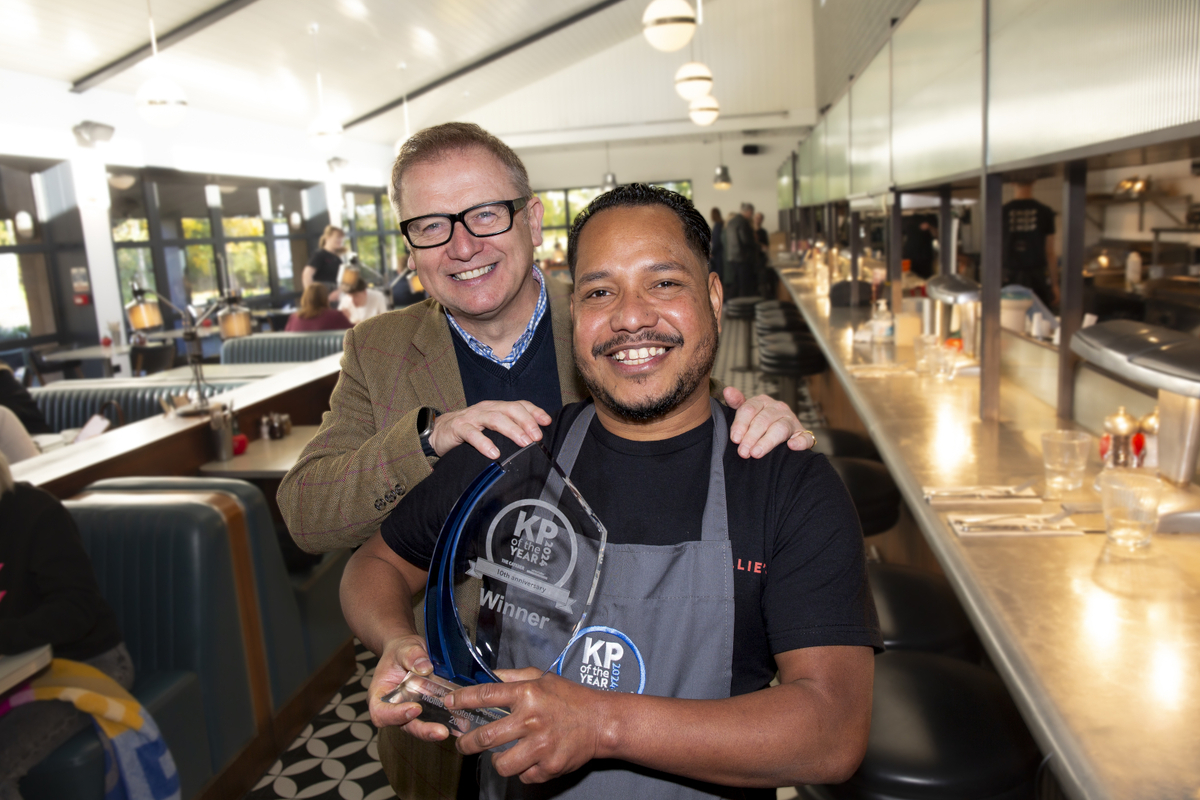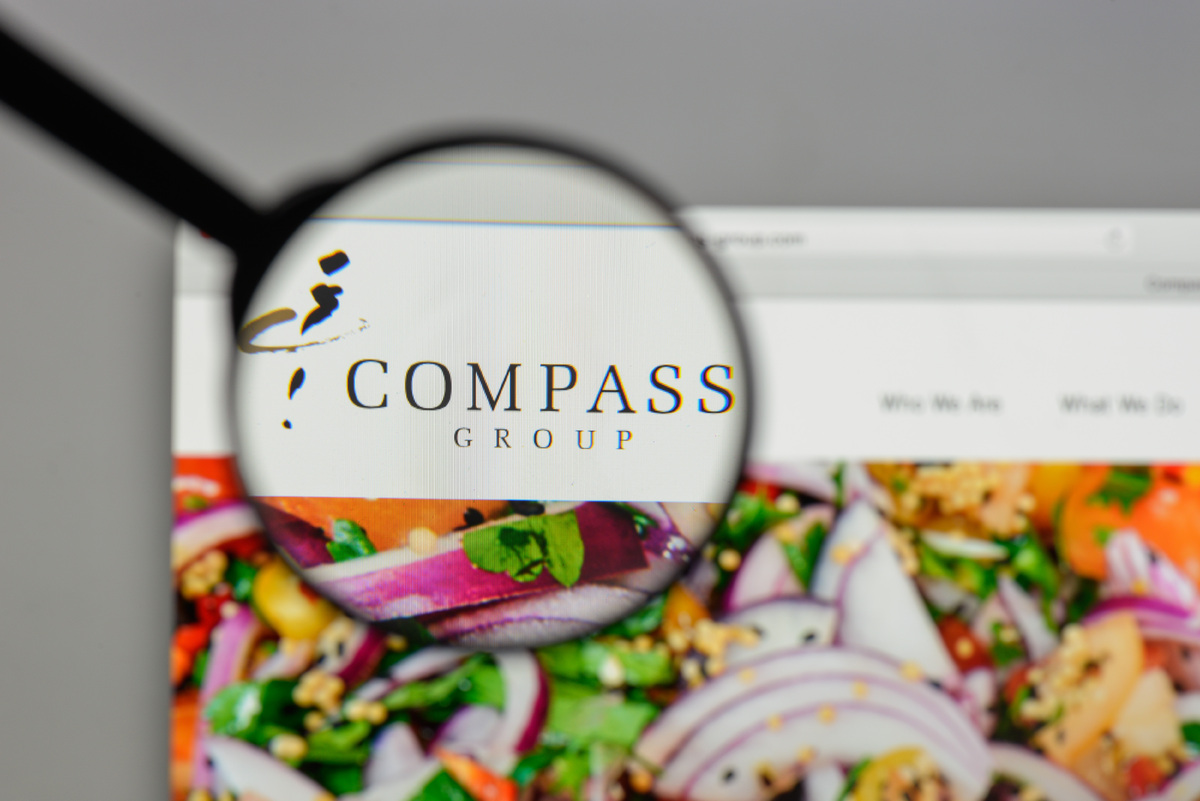Uptown grill: barbecue season heats up
While barbecue can be a profitable summertime staple, consumers are looking for premium options that they can’t create in their own back garden. Anne Bruce looks at the latest trends
Call it barbecue, call it BBQ, call it smokehouse or firepit or grill – with the barbecue format, you’re not just selling the sausages, you’re selling the sizzle.
From gourmet burgers and foot-long hot dogs to aubergine steak specials, customers want to be treated to not just food, but a taste of a lifestyle at a barbecue venue.
Restaurants firing up the grill need to make sure that their offering is more than just a rib-tickling feast. The barbecue of 2020 needs to be Instagrammable, vegan-friendly, spicy, even edgy.
So, what are suppliers’ tips for the foodservice operator catering for what we hope will be a profitable return to business for the 2020 barbecue season? What are the on-trend ‘mains’, meats or burgers or seafood fish or vegetarian options? How do you get side orders, salads and breads right, and how do you choose the condiments, sauces and seasonings to take your food to the next level?

Meat cute
For the meat, American-influenced options are on-trend. Smoky fried chicken and brisket chillis are becoming popular on independent and chain menus alike, says Nigel Parkes, marketing director of Creative Foods.
And with consumers eating more Asian food than ever and that cuisine’s preference for chicken wings and thigh products, we are now seeing chicken thighs being used as an alternative to breast meat, he notes.
Other meat trends on the barbecue scene take inspiration from Korean and Filipino specialities, such as bulgogi barbecued beef and Pinoy-style pork. Korean cuisine is gaining traction and the typical Korean barbecue style, known locally as gogi-gui, is increasing in popularity, especially in restaurants that offer the live charcoal grill concept inlaid into tables, according to spices supplier EHL Ingredients.
Chefs have to cater for a far broader range of expectations on barbecue menus, says Dean Kinsey, development chef with Oliver Kay Produce, part of the Bidfresh group.
Kinsey suggests that serving fish on the barbecue is a great way to drive sales. Oily fish such as line-caught mackerel and Cornish sardines grill well, as do sustainably farmed bream and stone bass. The more delicate flavours of fish can be complemented with robust chilli or Cajun spice. Or for a gourmet barbecue option, Clearwater Seafoods, which catches and sells wild-caught Canadian shellfish, can offer prepared split lobster halves.
The veg of glory
Offering options to appeal to meat-free eaters can help to drive repeat visits, suggests Tasneem Alonzo, joint managing director at EHL Ingredients. She says: “Meat-free barbecue foods, such as cauliflower steak, halloumi, seitan, sausages and plant-based burgers will be in demand during 2020, so it’s key to trial and test products before you launch to ensure they are hitting all the key notes in terms of flavour, texture, aroma and visual appeal.”
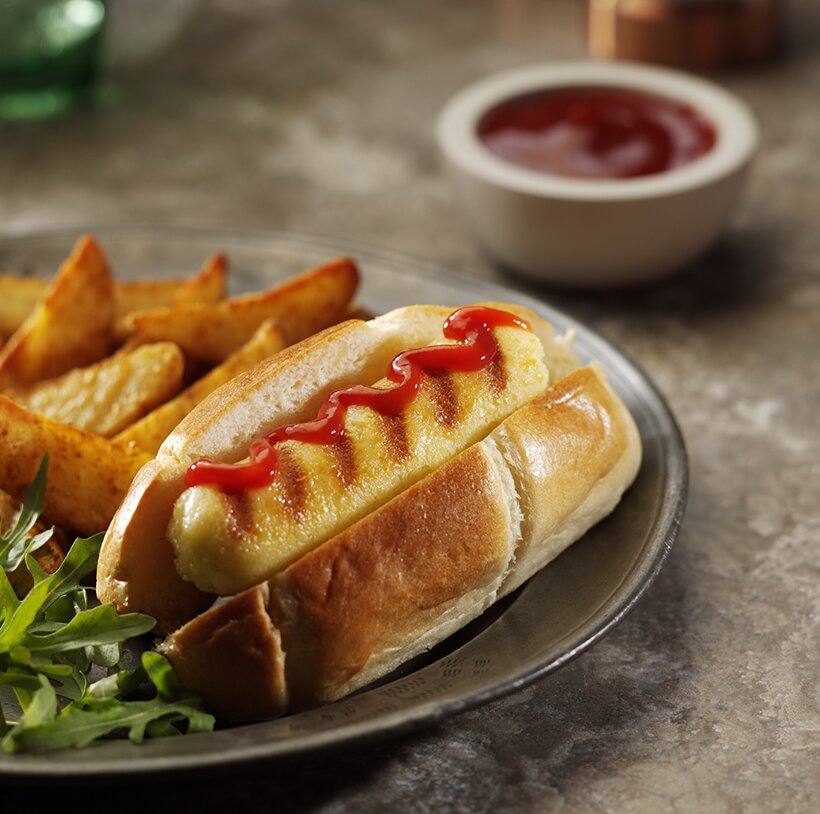
Vegetarian barbecue alternatives are increasingly varied. Eurilait, specialist in continental dairy produce, has experienced growth in demand for its alfresco cheese steaks and cheese sausages, both of which are suitable for vegetarians and flexitarians.
“We are seeing growth in cheeses such as mozzarella, halloumi and feta being consumed as main meal components, and as credible vegetarian options that can be cooked on the barbecue or a griddle,” says James Millward, managing director at Eurilait.
These options can be served in a burger or hot dog bun, with the usual relishes and accompaniments.
A bit on the side
Allowing customers to personalise their burgers with toppings and relishes is another good strategy for the barbecue as the customisation trend continues into 2020.
A choice of toppings such as pulled pork, Manchego cheese, chorizo and jalapeños help create an exciting menu, suggests Kate Sykes, marketing manager, Lantmännen Unibake UK.
It’s also important to remember that customers may want to customise their meal with a side order – but choice shouldn’t be limited to a standard portion of chips. Sweet potato fries, mac and cheese bites, loaded or topped fries, or tempura-coated vegetables could be offered, she recommends.
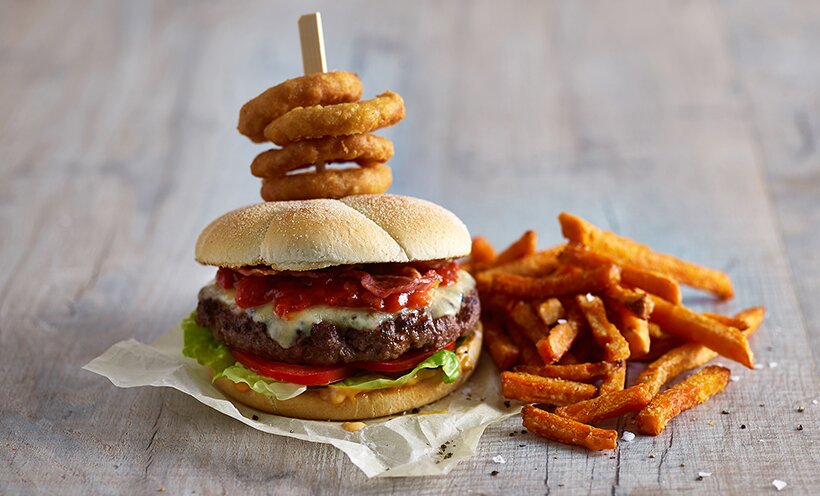
What operators don’t always consider is the huge opportunity there is to generate extra sales by offering alternative sides, says Mohammed Essa, commercial director, Aviko UK and Ireland. To complement the Korean barbecue trend, caterers can load up fries with kimchi, strips of sirloin beef and gochujang sauce for a spicy kick, he suggests. Or they could appeal to those looking for ‘dirty vegan’ comfort food by topping sweet potato fries with barbecue jackfruit.
Barbecued sides are a way for chefs to show their creativity and flair, says Adrian Brown, managing director, Cofresco Foodservice. Corn on the cob is a barbecue classic. Chefs can experiment with barbecuing other sides and see how the flavours can enhance dishes. Brown recommends wrapping sweet potatoes in foil before adding them to the barbecue to cook with the lid down.
Bread and butter
Kate Sykes of Lantmännen says that to keep up in this busy market, operators should also enhance their selections of barbecue breads. She recommends using buns that deliver distinctive tastes and textures, for example brioche or Kaiser rolls.
The burger bun or hot dog roll is critical to giving an Instagrammable finish to the barbecue in this age of social media, says Louise Reynard, foodservice commercial manager for St Pierre Groupe. A good-quality bread carrier is also an easy way to add margin, with research suggesting that people are willing to pay £1.25 extra for the right gourmet burger carrier, she says.
Brioche buns can be used across the menu, not just for the barbecue offer, from breakfast buns through to dinner service, thus saving space in the kitchen and minimising wastage, says Reynard.
Spice is nice
The choice of sauces and condiments is another exciting territory for the barbecue operator, with chilli jams and savoury marmalades used to complement a new range of barbecue items.

Chilli jam is a best-seller in foodservice and is great for summer vegetarian options such as halloumi burgers or barbecue baked Camembert, according to Jim Fox, head of sales at Stokes Sauces. The brand’s red onion marmalade is brilliant with sausages and hotdogs, he says.
“Consumers are also becoming more adventurous and are looking for something more than just ketchup or mayonnaise. For example, Stokes Bloody Mary ketchup is a great addition to a commercial barbecue operation and works wonderfully in burgers.”
Suppliers also have some new spice inspiration on offer for exotic barbecue foods. EHL Ingredients’ Lähde foodservice blends include Japanese togarashi seasoning, a Korean barbecue spice blend, Middle Eastern baharat, and panch phoron from Eastern India.
Togarashi is a traditional Japanese blend of peppers, chillies, peppercorns, seeds and nori. It has a variety of uses and is commonly added to grilled meats, chicken, or tempura, and can be added to accompaniments such as noodles.
Spices and condiments supplier McCormick’s latest Flavour Forecast report spotlights XO sauce from Hong Kong as another hot trend, with its umami taste proving popular.
And suya spice, a West African seasoning blend made from ginger, chillies and roasted peanuts, could prove a winner on UK barbecues.
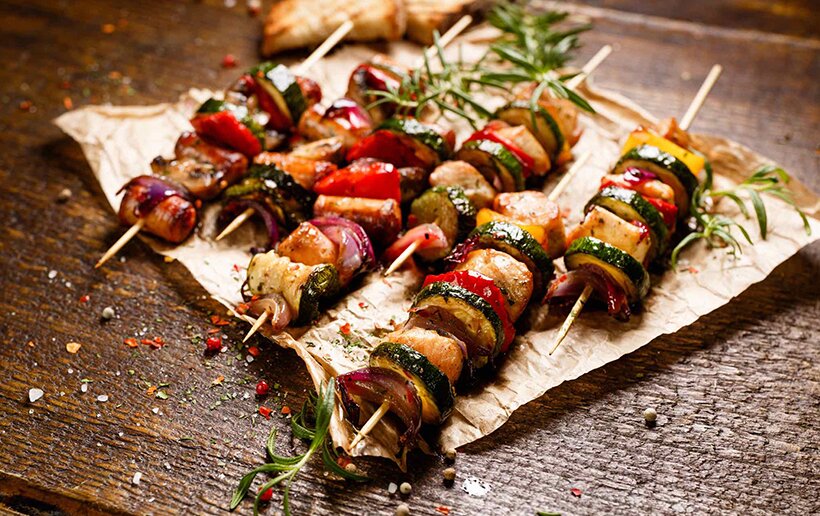
Fully equipped
Spices aside, your equipment is all-important when it comes to achieving the perfect barbecue taste. Equipment suppliers are upgrading their barbecue kit to respond to changing eating demands and to make their appliances more flexible.
Lincat has worked with one of its chain customers to develop plate separators for its chargrills. These can be used to cook food that needs to be separate, such as vegan or vegetarian items.
Helen Applewhite, group marketing manager, says that cross-contamination is a big issue: “The growth of veganism and increased awareness around allergens means kitchens need to be more vigilant with food preparation and cooking equipment, to avoid cross-contamination.”
And to speed things up, Synergy Grill Technology has developed thermal shock resistant bars for its barbecues, so that unlike conventional barbecues, where temperature loss is exacerbated by the volume of food placed on the bars, the temperature will remain consistent. Chefs can cook a higher volume of food, and not worry about peaks experienced with barbecue service, says Richard Ebbs, commercial and marketing director.
Speed of service is another important element to consider. While customers may love the barbecue, no one loves a queue, so operators should consider how to streamline, suggests Karen Swift, director of marketing and business development at Cinders Barbecues.

“Consider table service, think about how you might provide entertainment for the queue, or maybe have a ‘burgers and bangers only’ queue to relieve congestion. Another great tip that really works is to move the relish table well away from the point of service.”
When it comes to an out of home barbecue experience, customers have some high expectations, both for food and ambience. As Alison Smith, global product developer for Mars Foodservice puts it: “Customers will naturally expect a wider variety of innovative barbecue items to be served up in order to challenge the offering that they themselves can create on their own back-garden barbecue.”
While the “man meets meat” chaos of a typical family barbecue may be fun in the home, the out of home barbecue needs to be more of an all-singing and all-dancing experience.
Suppliers
Aviko www.aviko.co.uk
Bidfresh www.bidfresh.co.uk
Cinders Barbecue www.cindersbarbecues.co.uk
Creative Foods www.creativefoodseurope.eu
Eurilait www.eurilait.co.uk
Lantmännen www.lantmannen-unibake.com
Lincat www.lincat.co.uk
Mars Foodservice www.aimiafoods.com
McCormick www.mccormickflavoursolutions.co.uk
Stokes Sauces www.stokessauces.co.uk
St Pierre Groupe www.stpierregroupe.com
Synergy Grill Technology www.synergygrill.com


